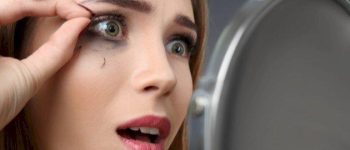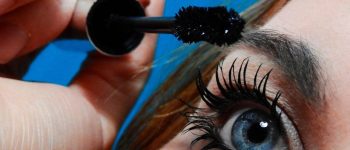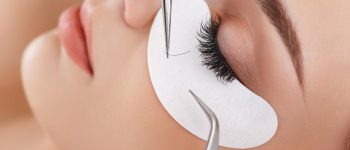Ingrown eyelashes can be a pesky problem that leads to persistent irritation and discomfort. If left untreated, they can even cause damage to your cornea. In this article, we will explore the causes, symptoms, and treatment options for ingrown eyelashes.

What is an Ingrown Eyelash (Trichiasis)?
Trichiasis occurs when an eyelash or lashes grow inward and come into contact with your eyeball. These lashes can be normal in thickness and color, or they may be thin, colorless, and difficult to see. The constant irritation caused by these ingrown lashes often leads to symptoms such as watering of the eye, redness, itching, eye discharge, and eyelid swelling. In more severe cases, ingrown eyelashes can even cause corneal surface damage and blurred vision.
Causes of Ingrown Eyelashes
Ingrown eyelashes can develop due to various factors. An anatomical issue, such as an inverted eyelid or excessive skin in the eyelid area, can lead to ingrown lashes. Injury or trauma to the eye, rare conditions like distichiasis or herpes zoster ophthalmicus, and autoimmune disorders can also contribute to the development of trichiasis. Additionally, aging and eye infections can cause eyelashes to become ingrown.
Recognizing the Symptoms
The most prominent symptom of trichiasis is persistent irritation in the eye. This irritation can lead to watering of the eye, redness, itching, eye discharge, and eyelid swelling. You may also experience a sensitivity to light and a gritty feeling in your eye. In extreme cases, corneal ulceration may occur. If you notice any of these symptoms, it is important to consult an eye specialist immediately to minimize the potential damage to your cornea.
Diagnosis and Treatment
Diagnosing ingrown eyelashes can be challenging, as some ingrown lashes may be difficult to see with the naked eye. Your optometrist or ophthalmologist may need to conduct a thorough eye exam to make an accurate diagnosis. Unfortunately, ingrown lashes do not resolve themselves and require professional treatment.
Treatment options for ingrown eyelashes include:
- Epilation: If only one or two lashes are affected, they can be removed using forceps. However, this treatment does not prevent abnormal lash regrowth.
- Electrolysis: Involves using an electrical current to permanently remove the eyelash. This method is effective but can be expensive and may cause scarring.
- Cryoablation: Involves using liquid nitrogen or argon gas to freeze and destroy the hair follicle. It offers a permanent solution but carries a risk of tissue damage.
- Surgery: In extreme cases, surgery may be necessary to reposition the eyelid and prevent recurrent ingrown lashes. This is a costly option but provides a permanent cure.
Remember, if you are experiencing any abnormal visual symptoms, it is crucial to consult a physician for an accurate diagnosis and appropriate treatment.
To schedule an appointment with a top-rated ophthalmologist or optometrist in New York City, visit Ekilove. Our experienced eye doctors will provide you with the best care for your ingrown eyelashes.
Important Reminder: This information is intended to provide guidance, not definitive medical advice. Please consult an eye doctor for a professional diagnosis and treatment plan tailored to your specific condition.




